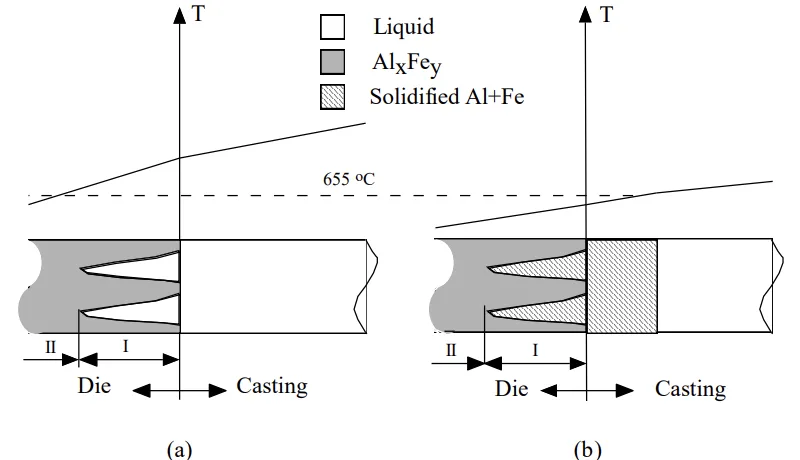Figure 2. Schematic illustration of the mechanism of die soldering, indicating (a) the presence of liquid at the die surface when the temperature at the surface is higher than a critical temperature, 655C, and (b) the formation of a joint between the casting and the die on solidification of this liquid phase.
Figure 2. Schematic illustration of the mechanism of die soldering, indicating (a) the presence of liquid at the die surface when the temperature at the surface is higher than a critical temperature, 655C, and (b) the formation of a joint between the casting and the die on solidification of this liquid phase.
